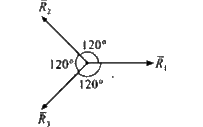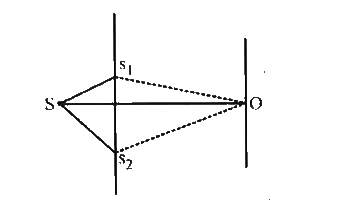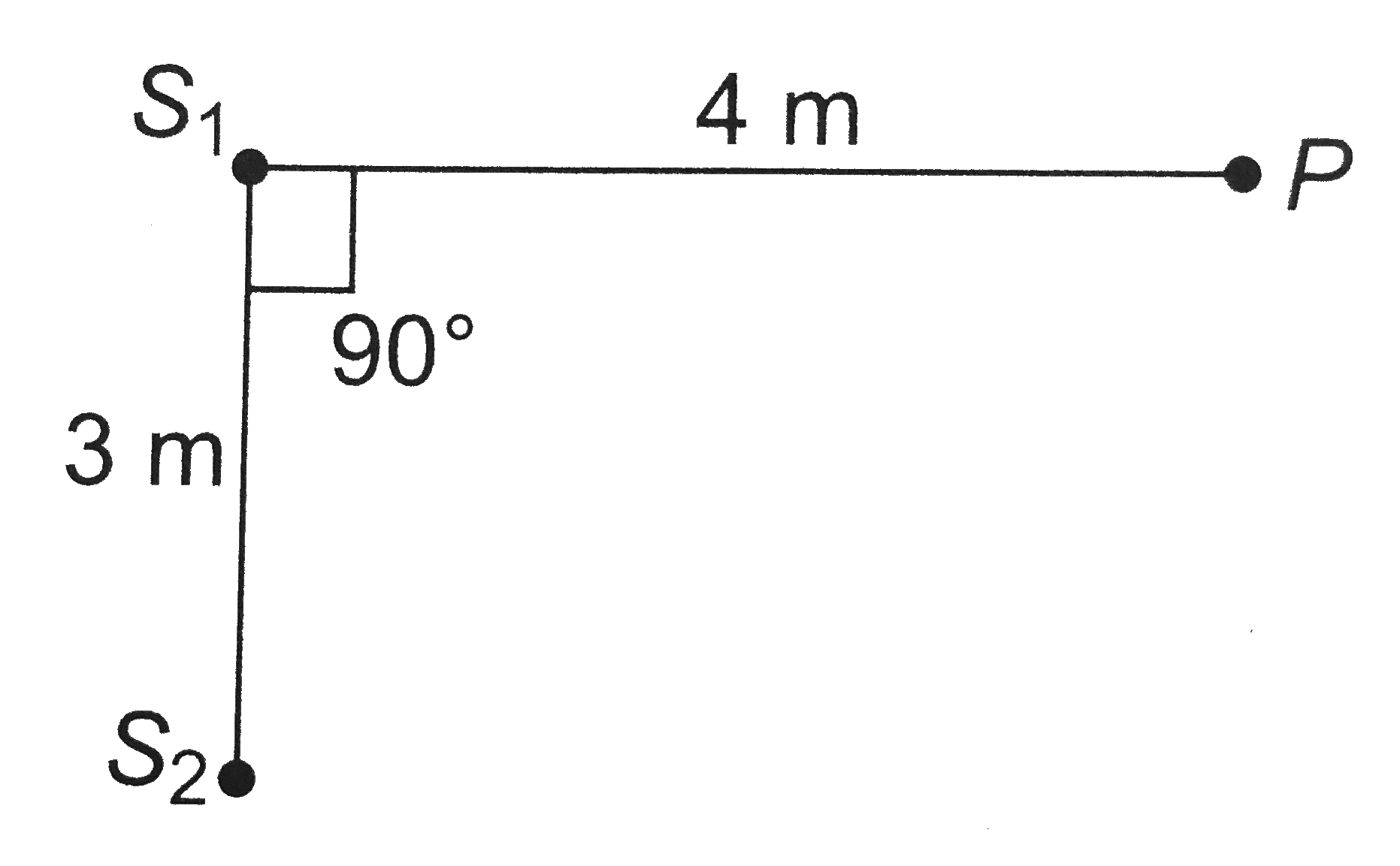Three sources of sound S1,S2 and S3 of equal intensity are placed in a straight line with S1S2=S2S3 shown in the figure. At a point P, far away from the sources, the wave coming from S2 is 120∘ ahead in phase of that from S1, Also, the wave coming from S3 is 120∘ ahead of that from S2. What would be the resultant intensity of sound at P ?

The correct Answer is:zero
At point P we use three waves with then amplitude given as
¯¯¯¯¯R1=A∠0∘
¯¯¯¯¯R2=A∠120∘
¯¯¯¯¯R2=A∠240∘
If we find the resultant we can see from the diagrma symmetry that
¯¯¯R=¯¯¯¯¯R1+¯¯¯¯¯R2+¯¯¯¯¯R3=0

Topper's Solved these Questions
- WAVES BOOK - PHYSICS GALAXY - ASHISH ARORACHAPTER - WAVES EXERCISE - Practice Exercise 6.4
10 Videos
- WAVES BOOK - PHYSICS GALAXY - ASHISH ARORACHAPTER - WAVES EXERCISE - Practice Exercise 6.5
16 Videos
- WAVES BOOK - PHYSICS GALAXY - ASHISH ARORACHAPTER - WAVES EXERCISE - Practice Exercise 6.2
11 Videos
- WAVE OPTICSBOOK - PHYSICS GALAXY - ASHISH ARORACHAPTER - WAVE OPTICSEXERCISE - Unsolved Numerical Problems
28 Videos
- X-RAYSBOOK - PHYSICS GALAXY - ASHISH ARORACHAPTER - X-RAYSEXERCISE - Unsolved Numerica Problem for Preparation
23 Videos
Similar Questions
Three sources of sound S1,S2andS3ofequal∫ensityareplaced∈astraightl∈ewithS_1S_2=S_2=S_3.Atap∮P.farawayomthesources,thewavecomingomS_2 si 120^@ahead∈phaseoftˆomS_1.Also,thewavecomingomS_3 is 120^@aheadoftˆomS_2. What would be the resultant intensity of sound at P?

View SolutionIf S1,S2andS3 be respectively the sum of n, 2n and 3n terms of a G.P., prove that S1(S3−S2)=(S2−S1)2
View Solution
Knowledge Check
If S1,S2,S3 are the sums of n, 2n, 3n terms respectively of an A.P., then S3/(S2−S1)−
A1B2C3D4A coherent light is incident on two paralle slits S1andS2. At a point P1 the frings will be dark if the phase difference between the rays coming from S1andS2 is
Anπ radiansB(n+0.5)π radiansC(2n+0.5)π radiansD(2n+1)π radiansTwo stationary soruces of sound, S1 and S2 having an equal frequency are fixed some distance apart. The position A is left of S1 , position B in the middle of the two sources and positionC is to the right of S2. An observer starts moving with velocity V0 from position A towards S1, then
Abeats for three position A, B and C will be heardBbeats will be heard from A and C but not in case of BCbeats will be not heard for A and C but will be heard for BDbeats will be not heard for three position of A, B and C
If S1,S2,S3 be respectively the sums of n, 2n and 3n terms of a G.P., prove that S1(S3−S2)=(S2−S1)2.
View SolutionIf S1,S2,S3be respectively the sum of n,2n and 3n terms of a GP, then S1(S3−S2)(S2−S1)2 is equal to
View SolutionTwo microwave sources S1 and S2 are located at a distance of 4λ from each other along Y-axis,with S1 at the origin as shown in the figure.A microwave detector D moves along the X-axis away from S1 .The first maximum is obtained for x equal to: (wavelength of the microwave is
View SolutionIn an interference experiment, the two slits S1andS2 are not equidistant from the source S. then the central fringe at 0 will be

View Solution
S1 and S2 are two coherent sources of sound of frequency 110Hz each they have no initial phase difference. The intensity at a point P due to S1 is I0 and due to S2 is 4I0. If the velocity of sound is 330m/s then the resultant intensity at P is
View Solution
